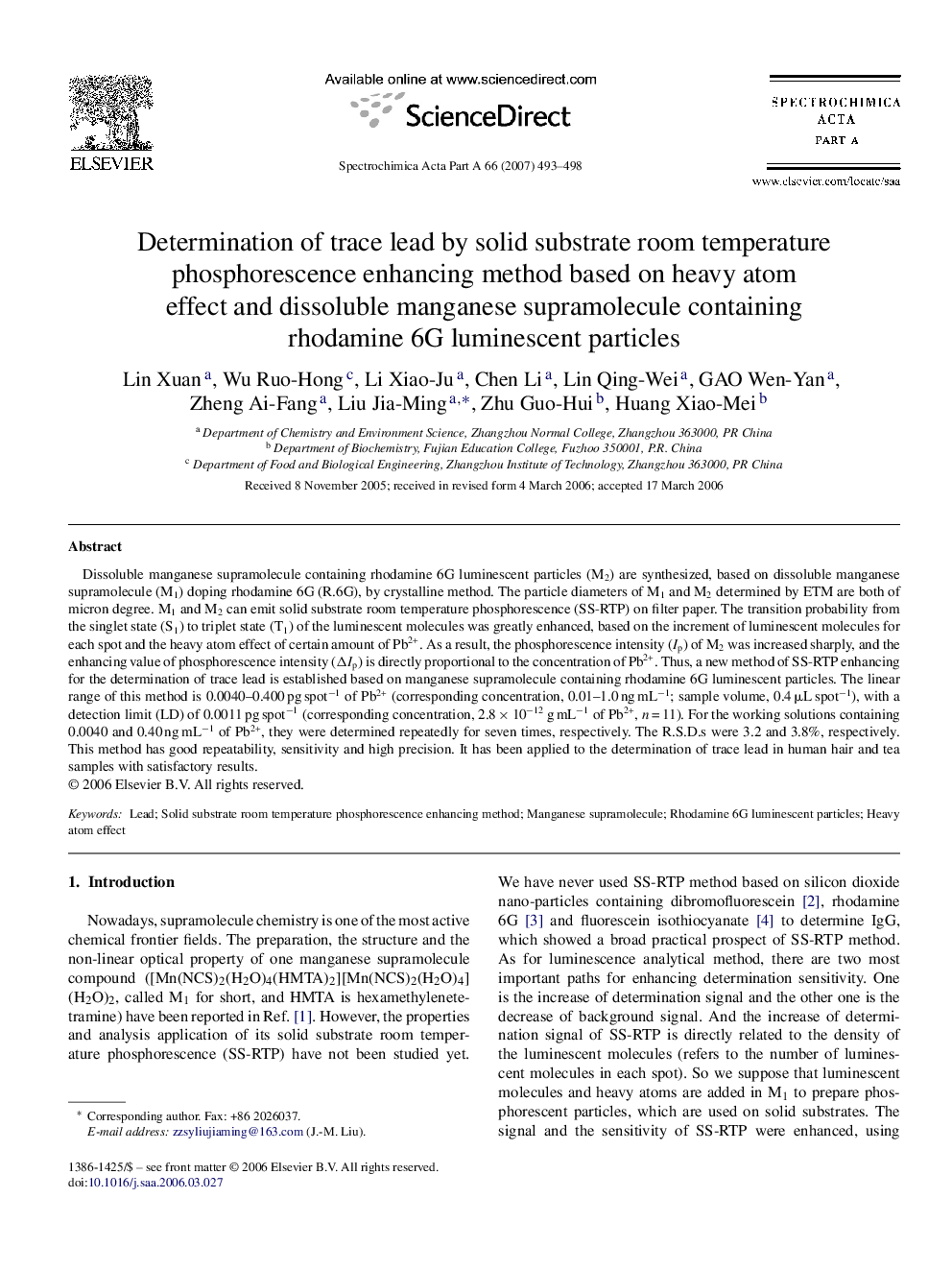| Article ID | Journal | Published Year | Pages | File Type |
|---|---|---|---|---|
| 1236048 | Spectrochimica Acta Part A: Molecular and Biomolecular Spectroscopy | 2007 | 6 Pages |
Abstract
Dissoluble manganese supramolecule containing rhodamine 6G luminescent particles (M2) are synthesized, based on dissoluble manganese supramolecule (M1) doping rhodamine 6G (R.6G), by crystalline method. The particle diameters of M1 and M2 determined by ETM are both of micron degree. M1 and M2 can emit solid substrate room temperature phosphorescence (SS-RTP) on filter paper. The transition probability from the singlet state (S1) to triplet state (T1) of the luminescent molecules was greatly enhanced, based on the increment of luminescent molecules for each spot and the heavy atom effect of certain amount of Pb2+. As a result, the phosphorescence intensity (Ip) of M2 was increased sharply, and the enhancing value of phosphorescence intensity (ÎIp) is directly proportional to the concentration of Pb2+. Thus, a new method of SS-RTP enhancing for the determination of trace lead is established based on manganese supramolecule containing rhodamine 6G luminescent particles. The linear range of this method is 0.0040-0.400 pg spotâ1 of Pb2+ (corresponding concentration, 0.01-1.0 ng mLâ1; sample volume, 0.4 μL spotâ1), with a detection limit (LD) of 0.0011 pg spotâ1 (corresponding concentration, 2.8 Ã 10â12 g mLâ1 of Pb2+, n = 11). For the working solutions containing 0.0040 and 0.40 ng mLâ1 of Pb2+, they were determined repeatedly for seven times, respectively. The R.S.D.s were 3.2 and 3.8%, respectively. This method has good repeatability, sensitivity and high precision. It has been applied to the determination of trace lead in human hair and tea samples with satisfactory results.
Keywords
Related Topics
Physical Sciences and Engineering
Chemistry
Analytical Chemistry
Authors
Lin Xuan, Wu Ruo-Hong, Li Xiao-Ju, Chen Li, Lin Qing-Wei, GAO Wen-Yan, Zheng Ai-Fang, Liu Jia-Ming, Zhu Guo-Hui, Huang Xiao-Mei,
